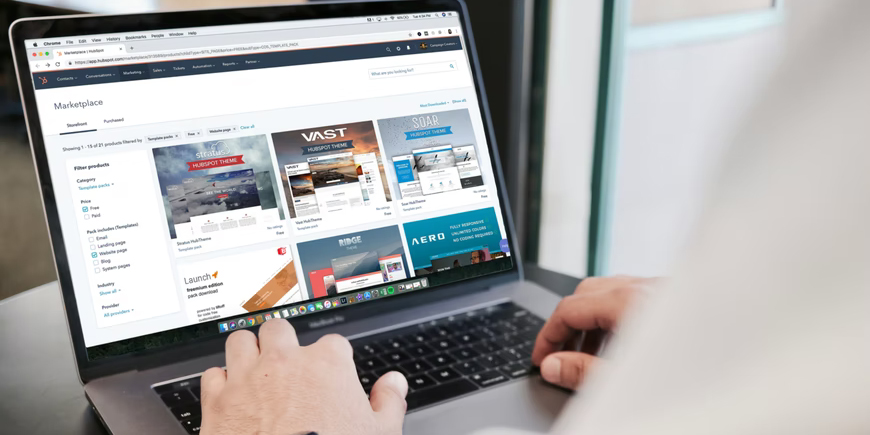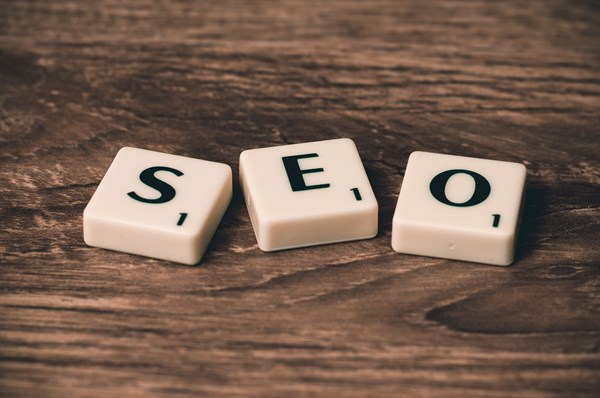At-a-Glance:
Following lead generation landing page best practices is an effective way to target your core client demographic and increase your qualified leads. By tailoring individual pages on your website to each of your product offerings, you can include highly relevant and influential information to drive conversions and sales. Read on to learn more about lead generation landing pages, including our top content, design, SEO, and analytics best practices.
Preface:
Successful lead generation is an essential part of any business, but it can be tricky for companies with longer sales cycles. These include companies that provide a B2B or subscription service, like SaaS, or companies that deal in big ticket purchase items, like manufacturing or construction equipment.
Out of all the different ways to generate leads online, an effective and time-tested digital lead generation marketing strategy is the use of landing pages. Landing pages refer to different ways prospective customers can enter or “land” on your website. Targeted lead generation landing pages focus exclusively on collecting information that can be used to check for qualified leads to nurture prospects into closing a sale. You can create different landing pages to target different audiences. For example, if you sell construction materials, you may want different landing pages for homeowners, dealers, and architects. By catering content, unique selling propositions (USPs), and benefits to each of these groups, your prospects are served highly relevant information, increasing the chances of conversion.
There are several ways to enhance and improve the effectiveness of your landing pages. Here at Bullseye, our expert marketing team has put together a list of lead generation landing page best practices to help you make the best of your targeted lead generation strategies and tactics.
#1. Focus on one primary offer or goal per landing page
 The best lead generation landing pages should be focused on one primary offer, service, or goal. Don’t try to advertise two, three, or every service that your company offers – that is the role of your homepage. Think of your landing page as a long-form ad. Prospective leads may arrive on this page from clicking on an ad, banner, organic search engine result, or other marketing channel. The landing page should expand on the initial offer that the prospect expressed interest in. Bolster this offer with your company’s USPs – what benefits and features set you apart from your competitors? Encouraging prospects to focus on the value your product or service offers is an effective landing page tactic that increases the chances of form-fills. In addition, don’t include your website’s main navigation bar at the top of a lead generation landing page. This provides a distraction and easy way out of your targeted landing page content. Credibility-boosting assets like privacy policies and terms of use can be linked to from the footer of your landing page.
The best lead generation landing pages should be focused on one primary offer, service, or goal. Don’t try to advertise two, three, or every service that your company offers – that is the role of your homepage. Think of your landing page as a long-form ad. Prospective leads may arrive on this page from clicking on an ad, banner, organic search engine result, or other marketing channel. The landing page should expand on the initial offer that the prospect expressed interest in. Bolster this offer with your company’s USPs – what benefits and features set you apart from your competitors? Encouraging prospects to focus on the value your product or service offers is an effective landing page tactic that increases the chances of form-fills. In addition, don’t include your website’s main navigation bar at the top of a lead generation landing page. This provides a distraction and easy way out of your targeted landing page content. Credibility-boosting assets like privacy policies and terms of use can be linked to from the footer of your landing page.
#2. Keep the landing page clean and simple
 It takes about 50 milliseconds for a user to make a first impression of a website, and the last thing any prospect wants to do is read long, dense paragraphs of text. Keep your lead generation landing page design clean, simple, and professional. Use images to break up text and add visual interest. In addition, colorful images can increase readership by 80%. However, make sure your images are compressed and optimized for the web – slow load times can drive prospects away and negatively affect organic search engine result rankings.
It takes about 50 milliseconds for a user to make a first impression of a website, and the last thing any prospect wants to do is read long, dense paragraphs of text. Keep your lead generation landing page design clean, simple, and professional. Use images to break up text and add visual interest. In addition, colorful images can increase readership by 80%. However, make sure your images are compressed and optimized for the web – slow load times can drive prospects away and negatively affect organic search engine result rankings.
Break up your content into bullet points or short paragraphs and increase the line height and space between paragraphs to allow for easier readability. While it’s commonly understood that users tend to skim website content, it’s also important to realize that users will skim headlines and subheadlines as well. This usually involves skimming the first three and last three words of a heading, so make sure important content can be found in the beginning and end of your main and subheadlines.
You also want to make sure your call-to-action (CTA) button is impactful and captures your user’s attention. Use a strong, contrasting color and clear, descriptive copy. Users want to know how their information will be used and what they are getting for it. Instead of writing vague CTA copy like “Submit,” “Join,” or “Learn More,” try writing specific, informative copy like “Start Your Free 14-Day Trial Today,” “Schedule a Product Demo,” or “Get a Free Consultation Now.”
#3. Don’t be afraid of long landing pages
 While it’s important to keep your lead generation landing page design clean, simple, and easy to read, it’s also important to provide your prospects with all the information they need. The more information, testimonials, and background you provide the user, the more credibility and brand awareness you build with them, and the more willing they will be to provide you with their information. Some companies even place their lead gen forms at the very bottom of their landing pages. In fact, longer landing pages can increase lead generation by as much as 220%.
While it’s important to keep your lead generation landing page design clean, simple, and easy to read, it’s also important to provide your prospects with all the information they need. The more information, testimonials, and background you provide the user, the more credibility and brand awareness you build with them, and the more willing they will be to provide you with their information. Some companies even place their lead gen forms at the very bottom of their landing pages. In fact, longer landing pages can increase lead generation by as much as 220%.
#4. Optimize your lead gen form
 When it comes to lead form best practices, you want to make your lead form as easy as possible for the prospect to fill out. One method is to combine fields where you can. Instead of asking the user to fill out their first name, then last name, just create one “Full Name” field. See if you can enable autofill for addresses or calendar pickers for dates. Form friction is especially important to avoid on mobile devices. If the form seems too inconvenient to fill out, prospects may leave.
When it comes to lead form best practices, you want to make your lead form as easy as possible for the prospect to fill out. One method is to combine fields where you can. Instead of asking the user to fill out their first name, then last name, just create one “Full Name” field. See if you can enable autofill for addresses or calendar pickers for dates. Form friction is especially important to avoid on mobile devices. If the form seems too inconvenient to fill out, prospects may leave.
In addition, you don’t want to ask too many questions. Do you really need to know their personal address? Asking for unnecessary information may feel intrusive and make users wary. Only ask for information you need, and use your landing page’s content to provide value and context for the prospect’s information. You may also consider including a privacy policy, terms of use, or a security seal near your lead generation form to foster trust by showing full transparency with what will happen with their data.
One thing to keep in mind is there may be a relationship between the lead form and the quality of leads. Extremely short lead gen forms may result in more form fills but less qualified leads while longer forms may result in fewer form fills but highly qualified leads.
#5. Build credibility with testimonials on your landing pages
 Use client testimonials to build credibility and show the value you have brought to happy customers. Users often conduct their own reviews research, so by including testimonials and social proof, you are saving prospects time and effort while presenting your best client successes. In addition, 88% of consumers say they trust online reviews as much as personal recommendations. You can also build credibility by listing any reputable brands you work with.
Use client testimonials to build credibility and show the value you have brought to happy customers. Users often conduct their own reviews research, so by including testimonials and social proof, you are saving prospects time and effort while presenting your best client successes. In addition, 88% of consumers say they trust online reviews as much as personal recommendations. You can also build credibility by listing any reputable brands you work with.
#6. Optimize landing pages for mobile devices
 With half of worldwide internet traffic coming from mobile devices, it’s extremely important to optimize your lead generation landing pages for mobile devices. This includes ensuring landing pages are responsive, image compression for load times, and the form optimization tips we discussed above. According to Adobe, companies who optimized for mobile devices tripled their chances of increasing mobile conversion rates to 5% or above.
With half of worldwide internet traffic coming from mobile devices, it’s extremely important to optimize your lead generation landing pages for mobile devices. This includes ensuring landing pages are responsive, image compression for load times, and the form optimization tips we discussed above. According to Adobe, companies who optimized for mobile devices tripled their chances of increasing mobile conversion rates to 5% or above.
#7. Use SEO to drive pre-qualified traffic to landing pages
 Besides driving online leads to your landing page from ads, banners, LinkedIn, Facebook, and other marketing or social media channels, you can also drive online leads through organic search engine results. By improving your landing page’s search engine optimization (SEO), you can improve your ranking position in search engines like Google. This will allow you to generate qualified leads from related organic searches. You can improve the credibility and brand awareness of your landing page by including your company’s name in the Meta Title Tag (the first line of clickable copy in a search result listing). In fact, 66% of top performing landing pages follow this tactic. Populating a Meta Description Tag for the page also helps with click-through rates. Consider the Meta Description Tag copy as free advertising copy that can be leveraged to entice users to click on your search listing versus a competitor’s. Including unique value proposition copy can also help your listing stand out. Some examples include “free shipping,” “14-day free trial,” “no contracts,” “free installation”, “quick setup,” and “responsive.” Populating these metadata fields is a great way to control the messaging that prospects will read when deciding which search engine result to click on. If the fields are not populated, then search engines will likely display the first pieces of copy from the landing page itself.
Besides driving online leads to your landing page from ads, banners, LinkedIn, Facebook, and other marketing or social media channels, you can also drive online leads through organic search engine results. By improving your landing page’s search engine optimization (SEO), you can improve your ranking position in search engines like Google. This will allow you to generate qualified leads from related organic searches. You can improve the credibility and brand awareness of your landing page by including your company’s name in the Meta Title Tag (the first line of clickable copy in a search result listing). In fact, 66% of top performing landing pages follow this tactic. Populating a Meta Description Tag for the page also helps with click-through rates. Consider the Meta Description Tag copy as free advertising copy that can be leveraged to entice users to click on your search listing versus a competitor’s. Including unique value proposition copy can also help your listing stand out. Some examples include “free shipping,” “14-day free trial,” “no contracts,” “free installation”, “quick setup,” and “responsive.” Populating these metadata fields is a great way to control the messaging that prospects will read when deciding which search engine result to click on. If the fields are not populated, then search engines will likely display the first pieces of copy from the landing page itself.
When performing keyword research, avoid targeting the most searched terms and instead focus on queries that are tailored to your specific vertical and unique benefits. This will result in search terms that are less competitive and highly relevant to your content, resulting in more highly qualified leads spending more time on your lead generation landing page and driving additional form fills.
You’ll want to make sure to include a link from your landing page back to your company homepage. The more “backlinks” your homepage has, the more site authority and credibility search engines will associate with it. Reap the additional benefit of landing pages by including your company logo in the header and hyperlinking back to your homepage. Online security is also a major ranking factor, so make sure all your landing page URLs are using a secure protocol – meaning that they begin with HTTPS and not HTTP.
#8. Continue to test and make changes
 Once you launch your landing pages, keep an eye on your lead generation analytics and metrics through a reporting service like Google Analytics. Are your landing pages hitting the right demographics? Are users staying and engaging with your page? And most importantly – are you seeing an increase in new leads?
Once you launch your landing pages, keep an eye on your lead generation analytics and metrics through a reporting service like Google Analytics. Are your landing pages hitting the right demographics? Are users staying and engaging with your page? And most importantly – are you seeing an increase in new leads?
By keeping track of the bounce rate and time on site metrics, you will be able to get an idea of how engaged prospects are with your landing page. A high bounce rate means users are leaving immediately without engaging with your page. You can then look into your audience demographics and traffic sources to see where your landing page content may have missed the mark. Perhaps homeowners are finding your landing page for architects through a traffic source you didn’t account for.
Do you have a low bounce rate, high time on site, but low form fills? This lets you know users are interested and engaged in your content, but there is friction somewhere in the lead form. Are you providing value for prospect information? Perhaps consider offering a free ebook, demo, consultation, case study, or product tour upon form submission.
A/B testing is a great way to continually enhance your landing page marketing strategy. It’s important to only change one factor per A/B test, such as headline copy. You can truly optimize your landing pages to deliver highly relevant content for specific audiences. In fact, Hubspot has found that companies with 10-15 landing pages see a 55% increase in leads!
Lead generation landing pages are a great asset for any company, but they can seem intimidating to design, manage, and optimize. We hope this list of 8 best practices for lead generation landing pages will help you and your company attract new prospects and drive lead conversion. See how we’ve adopted these best practices ourselves with this perfect lead generation landing page example, our Partner Promoter landing page, where we drive form fills by offering demos and emphasizing the benefits, features, and value of our product.




